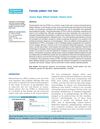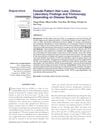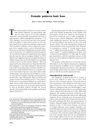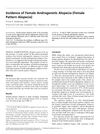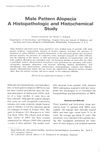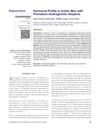Correlation Between Clinical Features, Biochemical Parameters, and Histopathological Findings in Women with Patterned Baldness: A Study from North India
January 2019
in “
PubMed
”
patterned baldness serum ferritin dehydroepiandrosterone sulfate DHEAS miniaturization of hair follicles telogen count perifollicular fibrosis hyperandrogenism adrenal androgens female pattern hair loss FPHL hormonal imbalances histopathology acne acanthosis nigricans patterned hair loss DHEA-S hair follicle miniaturization increased telogen phase fibrosis around hair follicles high androgen levels female hair thinning hormone imbalance skin acne dark skin patches

TLDR Patterned hair loss in women is linked to hormonal imbalances and biochemical changes, and should be evaluated for underlying health issues.
In 2019, a study was conducted on 100 women from North India suffering from patterned baldness. The research found a significant correlation between the severity of hair loss and elevated levels of serum ferritin and dehydroepiandrosterone sulfate (DHEAS). Histopathological examination showed miniaturization of hair follicles, increased telogen count, and perifollicular fibrosis. The study concluded that patterned hair loss in women is not just a cosmetic issue but also a systemic one, with biochemical changes playing a significant role. In another part of the study, 30 women with patterned baldness were examined, and it was found that hyperandrogenism, particularly adrenal androgens, played a significant role in female pattern hair loss (FPHL). The study suggested that all female patients with FPHL should be evaluated for underlying hormonal imbalances. Histopathology in FPHL could also be used as a prognostic marker. The majority of the patients (70%) noticed the onset of hair fall before the age of 30 years, with a mean age of onset at 26 years. A significant association was found between different patterns of hair loss and acne, as well as acanthosis nigricans. The study concluded that patients presenting with FPHL should be advised a hormonal evaluation and should be subjected to histopathological evaluation as it can have prognostic implications in deciding the therapeutic approach.

